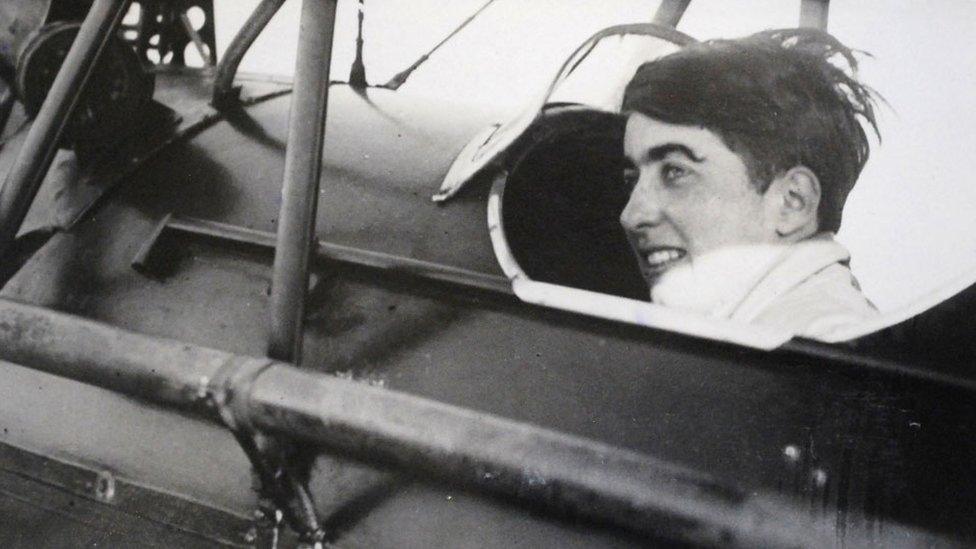Obituary: Mary Ellis the air pioneer
- Published

Mary Ellis was a pioneering woman pilot of the Air Transport Auxiliary
Mary Ellis blazed a trail for female aviators, as one of the first women to fly Spitfires, heavy bombers and jet aircraft.
She was a member of the Air Transport Auxiliary (ATA), which employed civilians to deliver planes from factories to airfields during the Second World War.
However, her contribution to the war effort was not always appreciated.
At one RAF base, the ground crew refused to believe she was the pilot of the Wellington bomber she had just landed.
"They actually went inside the aeroplane and searched it," she recalled.
"Everybody was flabbergasted that a little girl like me could fly these big aeroplanes all by oneself."
Mary Ellis died on Tuesday at the age of 101.

Born Mary Wilkins to a farming family in Leafield, Oxfordshire, she grew up close to RAF bases at Bicester and Port Meadow.
"I was interested in aeroplanes from almost the year dot," she said.
As a child, her father paid a flying circus to take her on a pleasure flight in a de Havilland 60 Moth. "I think that sealed my fate forever," she later recalled.
Her teenage "passion for the skies" led to flying lessons at Witney airfield.
When war broke out, a flying licence and that experience made her a suitable candidate for the ATA, which allowed qualified women to join as pilots from 1940.

Mary Ellis joined the ATA in 1941 after hearing an advertisement on BBC radio
Mary Ellis said she had flown "about 1,000 aeroplanes" during the war
The idea had a mixed reception.
The Aeroplane magazine fumed in a 1940 editorial: "Women anxious to serve their country should take on work more befitting their sex instead of encroaching on a man's occupation."
Another editor wrote: "The menace is the woman who thinks that she ought to be flying in a high-speed bomber when she really has not the intelligence to scrub the floor of a hospital properly."
"Girls flying aeroplanes was almost a sin at that time," Mary Ellis later recalled.
Against this background and despite her mother's misgivings, she applied to the ATA after hearing an advertisement on BBC radio and was "readily accepted" in 1941.
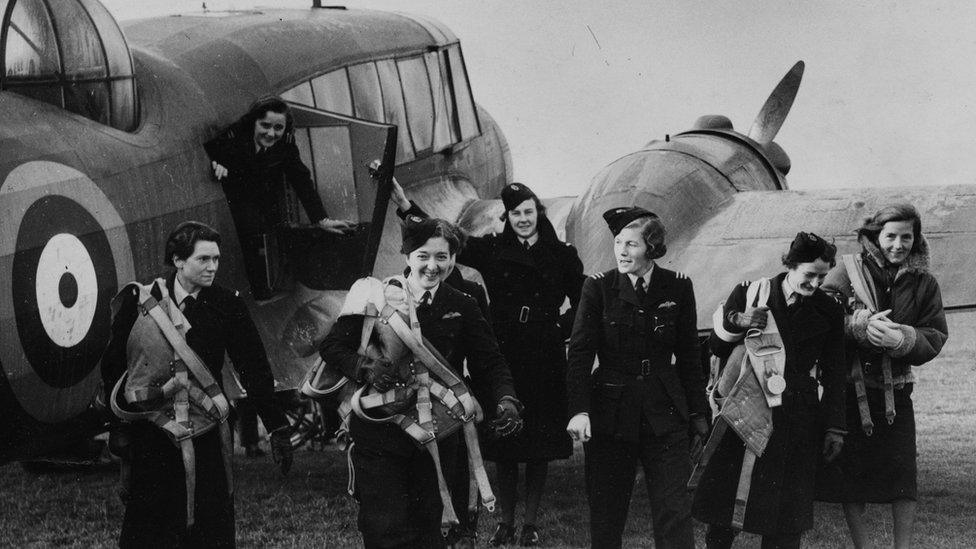
The first ATA women had a mixed reception in the media
She was soon flying "fast and furious aeroplanes and bombers all over the country", as aircraft production and casualties rose.
The work was "exhilarating and sometimes very dangerous", she recalled. Pilots often flew unfamiliar aircraft, guided by the "Ferry Pilots notes", which gave landing instructions.
"We'd say to each other, 'Oh look what I've got, look what I've got'. And that was terribly exciting. Sometimes frightening as well because the aeroplanes were all different. You'd get out of a Tiger Moth into a Wellington bomber and then into a Spitfire."
Based at an all-women's ATA pool in Hamble, Hampshire, she recalled that she flew "about 1,000" aircraft during the war including 76 different types.
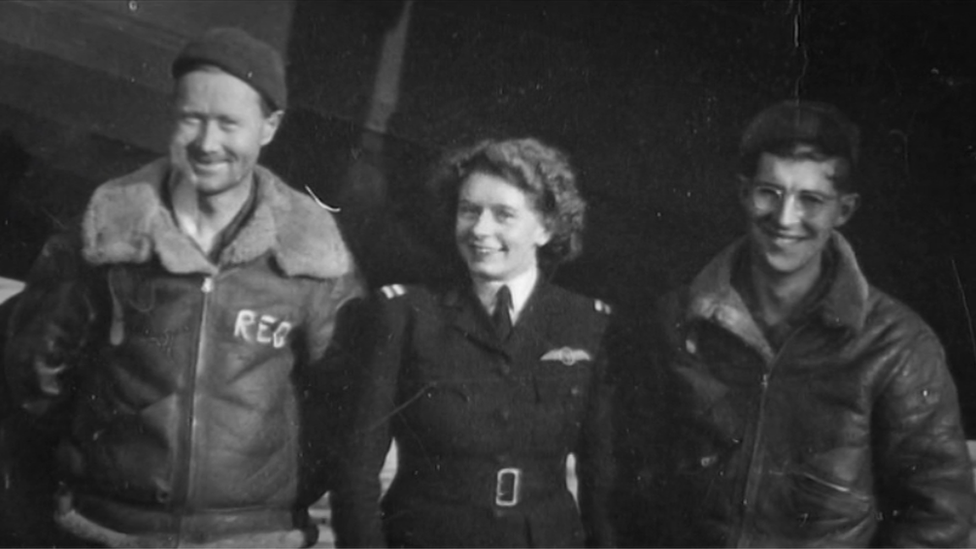
Mary Ellis said the women "proved that we could handle aeroplanes and do the job that we were supposed to do."
Mary Ellis came close to death on several occasions.
She was shot at over Bournemouth, possibly by friendly fire, and had a near-miss as she landed in fog at the same time as another Spitfire coming in the opposite direction.
She also survived a crash-landing when the undercarriage on her Spitfire jammed, causing the engine to overheat.
"I just knew that I had to do something before the engine blew up. One didn't get excited or anything else. It's just a part of the job of coping with an aeroplane."
Nearly one in 10 of the ATA's 168 female members were killed during the war, including aviation pioneer Amy Johnson.
Mary's friend Dora Lang died in a crash in 1944. "I missed her terribly", she recalled. "And for two days I was not allowed to fly - I didn't want to. But after that one realised, well, there is a war on, we must get on with our jobs. And we did."
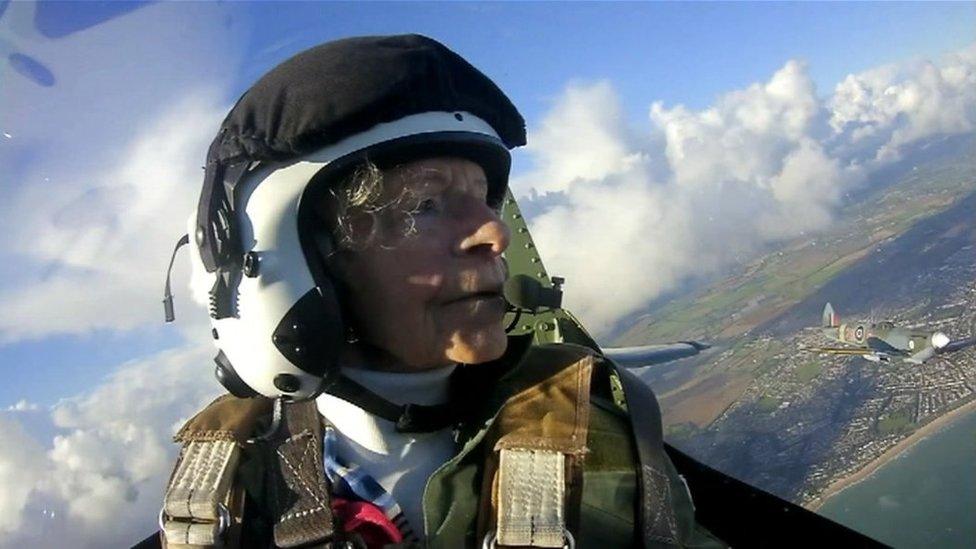
Mrs Ellis recalled flying "about 1,000 aeroplanes" during the war
The ATA's founder, Pauline Gower, had joked the organisation's acronym could stand for "Always Terrified Airwomen".
But Mary said the women "proved that we could handle aeroplanes and do the job that we were supposed to do."
They were also able to enjoy an active social life.
"We had lots of boyfriends. Because at that time we were called the 'glamour girls' - I don't know why. But there were always plenty of escorts around."
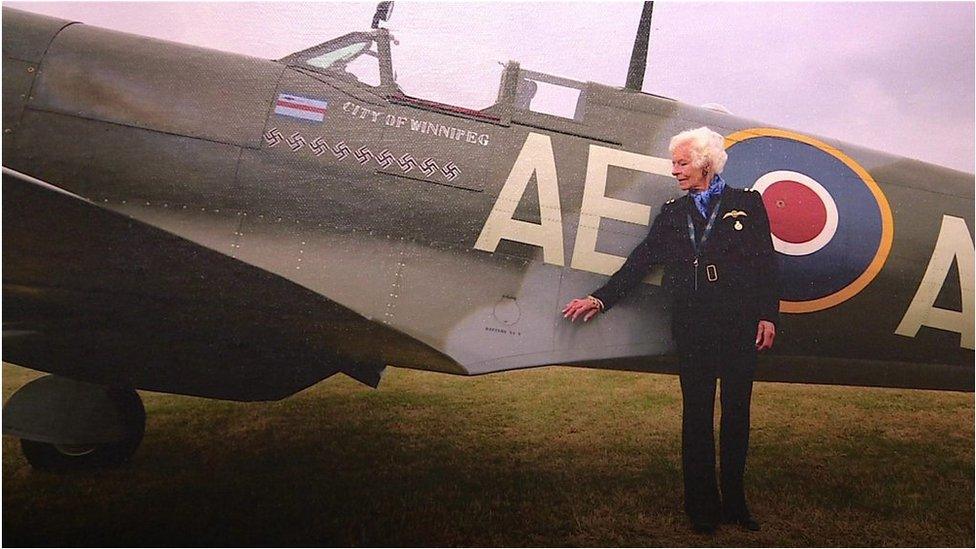
Mary Ellis said the Spitfire was "everybody's favourite" aircraft
When the ATA was disbanded in 1945, Mary Wilkins was seconded to the RAF, where she became one of the first women to fly Britain's first jet fighter, the Gloster Meteor.
She went on to become manager of Sandown Airport on the Isle of Wight in the 1950s and 1960s, hiring a former ATA colleague, Vera Strodl, as chief flying instructor.
A correspondent for Flight Magazine, visiting the airport in 1951, described it as a "woman pilots' Utopia", whose "extra quota of feminine charm... has had no disturbing effect on the enthusiasm of club members."
Away from the airport, she indulged a love of fast cars, entering and winning sports car rallies, and ran a fashion boutique.
"She is the most glamorous person I know," her niece Rosemarie Martin recalled before Mary's death.
"She enjoys fashion and always wears nail polish. Very strong on etiquette - the right china, the right cutlery, your manners, she could write a book on that."
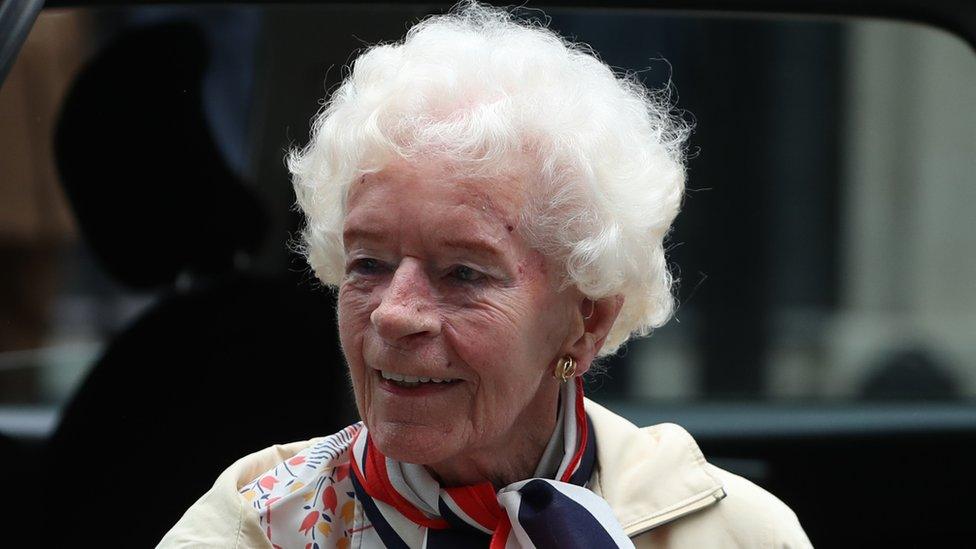
At the age of 101, Mary Ellis was still driving daily to local shops
Mary married Don Ellis, a fellow pilot, in 1961, and began to host "legendary parties", Ms Martin said.
She continued to live in the marital home beside the runway at Sandown after his death in 2009.
At the age of 101, she was still driving daily to local shops.
In November 2016, she and fellow ATA pilot Joy Lofthouse were honoured in front of members of the Royal Family at the annual Festival of Remembrance at the Royal Albert Hall in London.
"Being an ATA pilot was fantastic," Mary Ellis recalled.
"Up in the air on your own. And you can do whatever you like. I flew 400 Spitfires. And occasionally I would take one up and go and play with the clouds.
"I would like to do it all over again. There was a war on but otherwise it was absolutely wonderful."
- Published26 July 2018

- Published8 February 2018
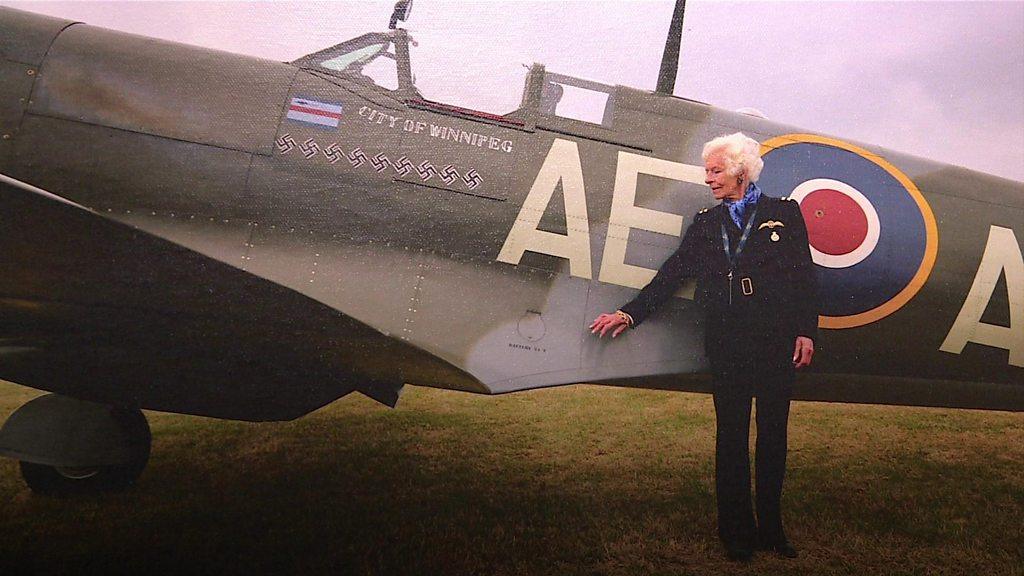
- Published18 January 2018

- Published14 March 2017
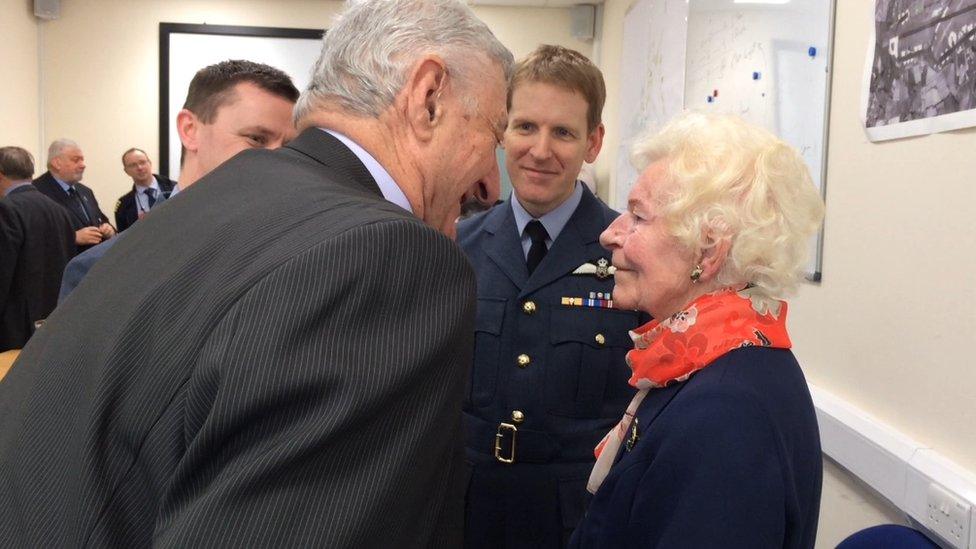
- Published2 February 2017

- Published9 October 2015
